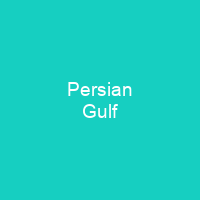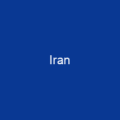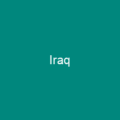The Persian Gulf is a mediterranean sea in Western Asia. The body of water is an extension of the Indian Ocean through the Strait of Hormuz. It lies between Iran to the northeast and the Arabian Peninsula to the southwest. In 2002, Iran, Iraq, Kuwait, Qatar, Saudi Arabia, and the UAE produced about 25% of the world’s crude oil reserves.
About Persian Gulf in brief

The Persian gulf is about 56 km wide at its narrowest, in the strait of HORMuz. Its length is 989 kilometres, with Iran covering most of the northern coast and Saudi Arabia most of its southern coast. Various small islands also lie within the Persian gulf, some of which are the subject of territorial disputes between the states of the region. The current flooding of the basin started 15,000 years ago due to rising sea levels of the Holocene glacial retreat. This inland sea of some 251,000 square kilometres is connected to the gulf of Oman in the east by the Strait. Its western end is marked by the major river delta of the Shatt al-Arab, which carries the waters of the Euphrates and the Tigris. The International Hydrographic Organization defines Persian Gulf’s southern limit as \”The Northwestern limit of Gulf of Sultanah\”. This limit is defined as a line joining Ràs Limah on the coast of Arabia and RàS al Kuh onThe coast of Iran \”. The Gulf has a higher salinity, and therefore exits from the bottom of the Strait, while ocean water with less salinity flows in through the top. Another study revealed the following numbers for water exchanges for the Persian Persian Gulf: evaporation = –1. 84 m year, precipitation = 0. 08 M year, inflow from the Strait = 33. 66 year, outflow from Strait = -32. 11 and the balance is 0 m year.
You want to know more about Persian Gulf?
This page is based on the article Persian Gulf published in Wikipedia (as of Dec. 30, 2020) and was automatically summarized using artificial intelligence.







